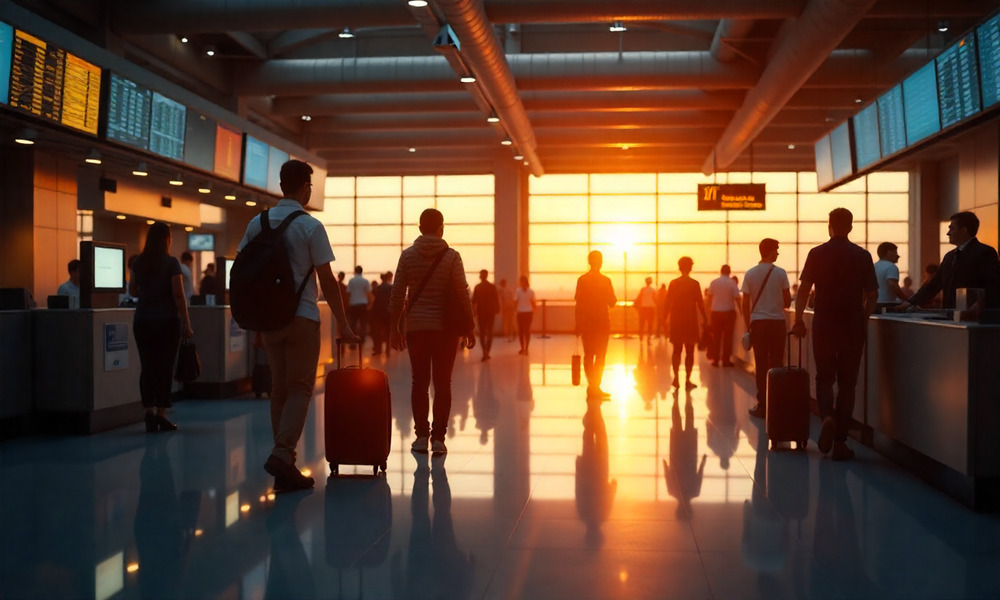Home » Latest Travel News of United States » United States To Enforce Harsh New Visa Measures Including Bonds Of Up To Fifteen Thousand Dollars And Mandatory Use Of Government-Approved Airports For Entry And Exit
Published on
August 7, 2025 |
By: TTW News Desk
The United States is introducing a strict new visa policy that will significantly raise both the cost and complexity of travel for visitors from countries with high overstay rates. Under the upcoming program, travelers may be required to post refundable bonds of up to fifteen thousand dollars and will only be allowed to enter or exit the country through designated airports. U.S. officials argue the measures are aimed at tightening immigration control and improving enforcement by making it easier to track and monitor individuals considered high-risk. However, critics warn this will deter legitimate tourism, disrupt business and educational travel, and impose a disproportionate burden on travelers from developing nations.
U.S. Set to Launch Stringent New Visa Bond and Airport Restriction Program Impacting Select Travelers
Starting August 20, 2025, traveling to the United States will become significantly more difficult and expensive for certain international visitors. A new visa bond pilot program is being rolled out by the U.S. Department of State, aimed at nationals from countries with high visa overstay rates. As part of the new rules, affected travelers will not only be required to post a hefty refundable bond of up to $15,000, but will also be restricted to entering and exiting the U.S. through specific designated airports.
This move marks one of the most sweeping changes in recent years to U.S. visa procedures, with multiple layers of added financial and logistical hurdles for those seeking entry on B-1/B-2 tourist and business visas. Although the exact list of countries targeted by this initiative has not yet been released, officials confirm that it will apply only to countries flagged for consistent noncompliance with U.S. immigration rules—specifically high rates of visa overstays.
Limited Access Through Designated U.S. Airports
One of the most significant changes under this new program is the introduction of designated points of entry and exit for visa holders who fall under the new bond rule. Instead of being able to fly into or depart from any international airport in the U.S., affected travelers will only be permitted to use specific airports approved by the federal government.
This targeted airport access is designed to tighten oversight and facilitate easier monitoring of travelers from countries deemed at high risk of visa overstays. The expectation is that travelers who post large financial bonds and are restricted to certain airports will be less likely to overstay and more likely to comply with visa rules due to the closer scrutiny involved.
However, this move is already sparking concerns among global mobility experts and travel groups. Critics argue that such restrictions amount to a form of profiling and could serve to stigmatize entire nationalities, regardless of individual intent or history of compliance. There are also worries about the logistical impact on airlines, which may be forced to redesign flight routes or implement new systems to verify not only visa validity but also whether a traveler is authorized to use a particular airport.
Visa Bonds Up to $15,000
The financial requirements of the new program are steep. Travelers may be asked to pay refundable visa bonds of $5,000, $10,000, or as much as $15,000, depending on the assessed level of risk based on the traveler’s country of origin. This sum is to be paid before entry into the United States and will be held until the traveler complies with all terms of their visa and leaves the country on time.
While the bond will be refunded in full if all visa conditions are met, the upfront cost may act as a powerful deterrent for many who wish to visit the U.S. for tourism, business meetings, or family events. For some families, the cost of bonds, flights, and visa application fees may make travel to the U.S. financially unfeasible.
Additional $250 Visa Integrity Fee Coming in October
In a separate but closely related development, the U.S. government has also announced the introduction of a new $250 “Visa Integrity Fee,” which will apply to all nonimmigrant visa categories. This includes not only tourists and business travelers but also international students, temporary workers, and cultural exchange participants.
Set to take effect on October 1, 2025, the Visa Integrity Fee will be mandatory and non-refundable, tacked on in addition to the already-existing application processing fees. For travelers already subject to the visa bond requirement, this additional charge represents yet another financial barrier.
The purpose of this fee, according to government documentation, is to fund enforcement programs and strengthen visa oversight. However, observers worry that the cumulative effect of these layered fees could significantly reduce the number of international visitors coming to the U.S.—especially from developing nations.
Implications and Outlook
With these sweeping changes, the U.S. is entering a new era of highly securitized and financially intensive visa management. While officially introduced as a temporary pilot program, the infrastructure required for implementing designated airport entry, processing bonds, and administering new fees suggests a long-term policy shift that could continue well into future administrations.
Travel industry groups and civil liberties organizations have expressed concerns about the broader impact on tourism, international education, and global diplomacy. Limiting entry and exit points, requiring steep upfront financial commitments, and increasing costs across visa categories may all contribute to a perception that the U.S. is becoming increasingly unwelcoming to foreign travelers.
As implementation begins, airlines, immigration attorneys, and international travelers alike will need to adapt quickly to this evolving regulatory environment. More detailed guidance, including the list of designated airports and targeted countries, is expected to be released in the coming weeks.
For now, those planning travel to the U.S. later in 2025 should stay informed, budget accordingly, and consider potential delays or changes in visa procedures—especially if they are from a country known for high visa overstay rates.

